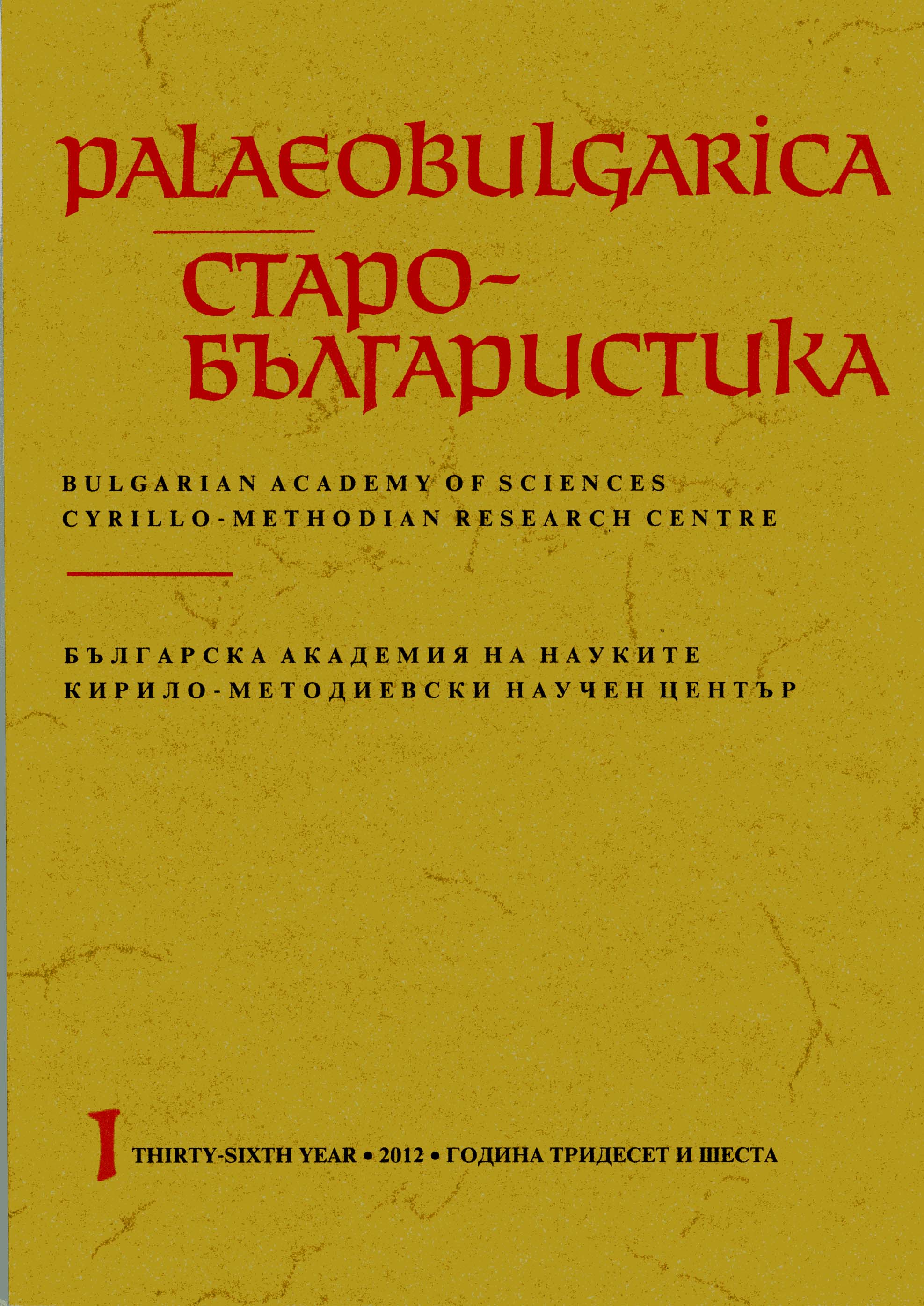Антилатинский цикл афонских легенд и болгарский Зограф
An Antilatin Cycle of Mount Athos Legends and the Bulgarian Zograf Monastery
Author(s): Dmitriy Mikhailovich BulaninSubject(s): Language and Literature Studies
Published by: Кирило-Методиевски научен център при Българска академия на науките
Summary/Abstract: The paper deals with a cycle of legends situated on the borderline between written tradition and folklore. The tales that form the cycle are written in Greek as well as in Church Slavonic and they tell about a real or imaginary raid of Catholics on Mount Athos. The raid was undertaken in order to break the resistance of the monks unwilling to join the Union of Lyons (1274) initiated and signed by the Byzantine Emperor Michael VIII Palaeologos. The cycle comprises the following items: (a) the "Synaxarian" or "Standard" tale in Greek, the most popular text of the series; (b) the "Second Synaxarian" tale in Greek that seems to be contemporary to (a) and that is known in a single copy; (c) the "Tale about the Zograf martyrs" in Church Slavonic preserved as a fragment in a Middle Bulgarian Synaxarium; (d) the "Zograf Tale" in Church Slavonic that occupies the second half of the "Tale about the Holy Mountain of Athos" by Stephan, a Bulgarian (1659); (e) the "Tale about Xeropotamou Monastery" in Church Slavonic which was quite widely spread in Ukrainian manuscripts from the 16th century on; in a special note attached to the text it is said that the Tale was brought to Suprasl monastery from Athos in 1546.The complex study of the texts listed above proves that the tradition split into two different branches early on, the first of them being the Greek tales (a and b). The texts (c) and (d) belong to the second branch, the use of Church Slavonic being, among other, their common trait. As far as text (e) is concerned it is a rather young contamination that mixes elements of the Greek and Church Slavonic versions. The cultural, literary and even codicological context makes it highly improbable that the core myth that is developed in different ways in every one of the legends antedates the 15th century. The paper shows that the Zograf monastery was not only the epicenter wherefrom the legends spread all over the Orthodox world but also the place where the myth itself was born. One may assume that the myth had to prove that the damage done to Athos monasteries and first of all to Zograf in the course of numerous raids by Latins were really considerable. Folk memory condensed the rumors about different devastations of the Holy Mountain into the legends attached to one of them, viz. the sole punitive expedition allegedly undertaken after the Council of Lyons. None of the tales cited can be considered to be a reliable historical source. The true impulse that got the monks' imagination started might have been the Union Council of Ferrara-Florence. This hypothesis is corroborated by a passage from the epistle compiled and sent by Athonites to the Great Prince of Moscow, Basilius II, immediately after the Ferrara-Florence Union was effectuated. The passage is valuable because it relates the very same events the cycle of tales examined here is devoted to. Thus the epistle to Basilius II is the earliest evidence for the existence of the myth that transfered the contemporary Greek-Latin religious controversies to the 13th century.
Journal: PALAEOBULGARICA / СТАРОБЪЛГАРИСТИКА
- Issue Year: 2012
- Issue No: 1
- Page Range: 3-23
- Page Count: 21
- Language: Russian
- Content File-PDF

